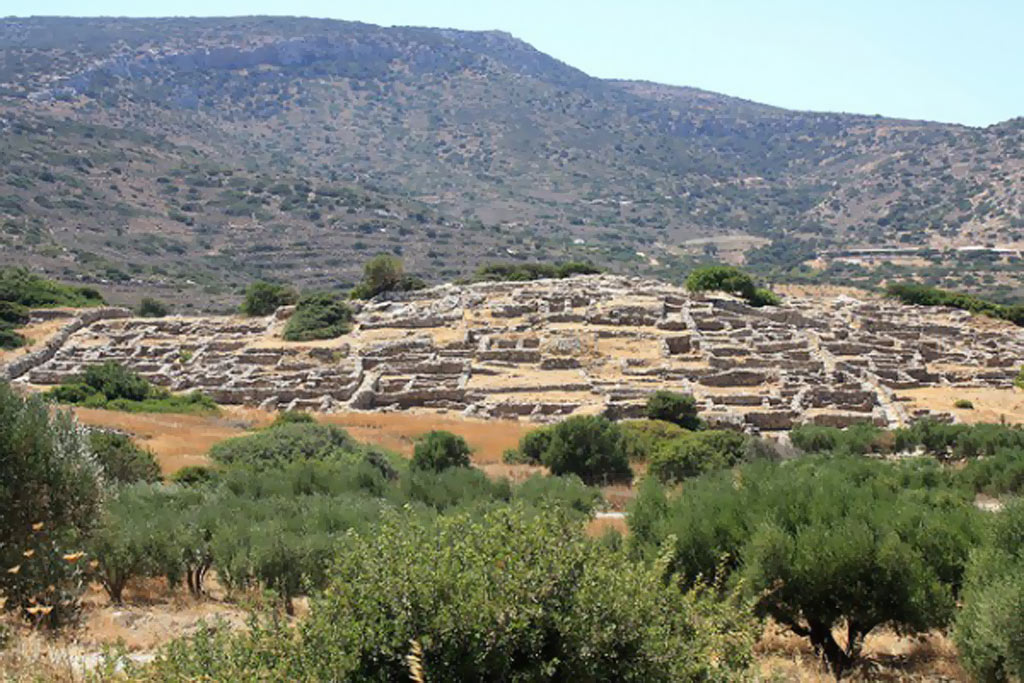Gournia – the ancient name of which is not known – is the most characteristic of the excavated medium-size settlements, dated to the period of the peak of the Minoan culture (Late Minoan I period: 1550-1450 B.C.). It is called “Pompeii of Minoan Crete” because of the good state of preservation. It occupies a low hill, close to the sea, at the Isthmus of Hierapetra. The first inhabitants settled here in the Early Minoan III period (2300 B.C.). Remains of the Middle Minoan period (2000-1600 B.C.) are also preserved; in c. 1600 B.C., the palace was erected but was destroyed along with the surrounding town in 1450 B.C., at the same time with all the other palatial centres of Crete. Fifty years later the site was partly reoccupied and was finally abandoned in around 1200 B.C.

